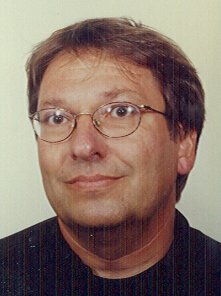Frans Theuws, born in Bergeijk, the Netherlands, in 1953. Ph.D. from the University of Amsterdam. Associate Professor of Archaeology at the University of Amsterdam.
Fellow (1 September 1999 – 30 June 2000)
My original plan was to write a book entitled: Frankish Transformations. Actions and thoughts of aristocrats and dwellers in the pagus Texandrië. The project was not entirely finished for two reasons: first the stay at the NIAS and the discussions with other Fellows (T. Noble and J. Smith) made me realise that some already accepted interpretations had to be reconsidered, second, in the final months of my stay I worked on the edition of a volume Topographies of Power in the series of the European Science Foundation programme The Transformation of the Roman World.
Frankish transformations is on the cultural interaction between different social groups and the landscape in relation to the process of the definition of social groups, the creation of identities, claiming land, and the formulation of norms, values and ideas in the southern Netherlands. The study is intended to be an example of “advanced study” of an early medieval landscape on the basis of different kinds of evidence. An important aspect of the book is the dialectic between the dominant representations inscribed in the landscape and their “reading” or interpretation. The landscape thus becomes an important element in the constant process of negotiation on important aspects of society by different groups.
The book contains six chapters of which two are finished (2 and 6) and two are in a state where the scaffolding has not yet been removed (3 and 5). Of one chapter the basic structure has been set up. The chapters are: 1: The pagus Texandrië: by way of introduction; 2: House, farmyard, settlement and burial grounds: spatial transformations; 3 Forest, trees, wells and names: the dwellers cultural appropriation of the landscape; 4 Gods given order: the aristocratic and ecclesiastical appropriation of the landscape; 5 Burial grounds and the symbolic construction of ancestors and communities; 6 The social and cultural horizon of aristocrats and dwellers.
Next to the work on this book I wrote my own contribution, Maastricht as a place of Power in the early Middle Ages, for the volume Topographies of Power in the Early Middle Ages. The article is meant to start an analysis of Maastricht as a Place of Power as well as to contribute to a new conceptualisation of early medieval centres. This can, for instance, be achieved by looking at the role of such centres in the integrated totality of exchanges that take place in the Early Middle Ages (gift exchange, commodity exchange, exchange with the supernatural world) instead of just considering them “trade and artisan centres”. Another element of their conceptualisation could again be the dialectics between dominant representations of power (in a physical sense in such a place) and the interpretations of them. For Maastricht itself the meaning of such centres for the definition of the power position of aristocratic groups and the nature of episcopal power was highlighted.
